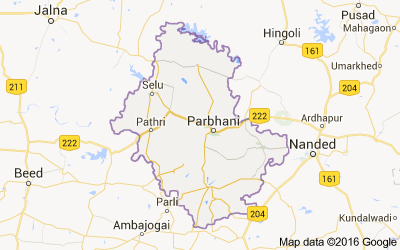Parbhani, earlier also known as “ Prabhavatinagar ”, is one of the
Eight districts in the Marathawada region of Maharashtra State
This entire Marathwada region, a district geographical region, was a
part of the erstwhile Nizam State; later a part of Hyderabad State;
after reorganization of states in 1956 it became a part of the then
Bombay state; and from 1960 onwards it is part of the present
Maharashtra state.
Parbhani district lies between 18.45 and 20.10 North Latitudes and 76.13 and 77.39 East Longitude.
The district is bounded on the north by Hingoli district. On the east
by Nanded district, on the South by Latur and on the West by Beed and
Jalna districts.
The state capital of Mumbai is to the west; Parbhani is well
connected by road to other major towns in Maharashtra and also in the
neighboring state of Andhra Pradesh.
Parbhani is one of districts of Maharashtra in India, Parbhani District
population in 2022 is 1,964,700 (estimates as per aadhar uidai.gov.in
Dec 2020 data). As per 2011 census of India, Parbhani District has a
population of 1,836,086 in 2011 out of which 942,870 are male and
893,216 are female. Literate people are 1,157,814 out of 666,291 are
male and 491,523 are female. People living in Parbhani District depend
on multiple skills, total workers are 822,797 out of which men are
501,422 and women are 321,375. Total 281,771 Cultivators are depended on
agriculture farming out of 172,500 are cultivated by men and 109,271
are women. 288,438 people works in agricultural land as labor, men are
148,417 and 140,021 are women. Parbhani District sex ratio is 947
females per 1000 of males. Next Parbhani District Census will be in
2022-2023.


